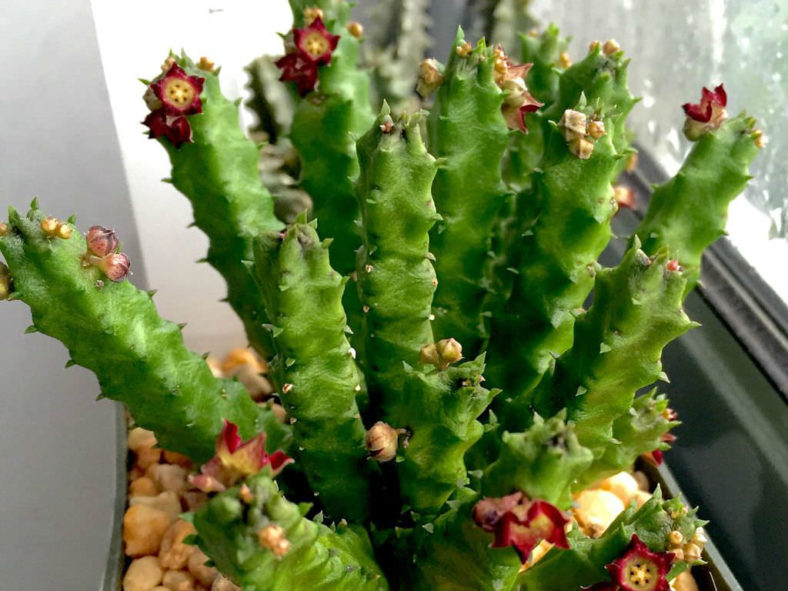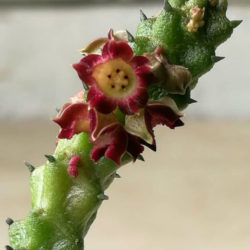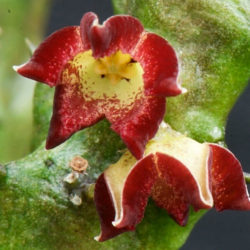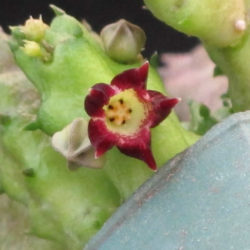Scientific Name
Baynesia lophophora Bruyns
Synonym(s)
Ceropegia lophophora
Scientific Classification
Family: Apocynaceae
Subfamily: Asclepiadoideae
Tribe: Ceropegieae
Subtribe: Stapeliinae
Genus: Baynesia
Description
Baynesia lophophora is a small succulent that forms clumps of erect, green to suffused brown stems with obscurely conical tubercles fused into four angles along the stem. The stems grow up to 3.2 inches (8 cm) tall and 0.5 inches (1.2 cm) thick. Leaves are reduced to tiny rudiments that are flattened-conical with occasional stipular denticles and inserted just below the base of the next tubercle.
The tiny nodding flowers are purple and appear in small clusters, usually 3 to 10 per stem, toward the stem apex in the fall. Fruits are smooth, horn-shaped follicles faintly streaked with brown on cream-green, with pale brown seeds with upward folded margins.
Origin
Baynesia lophophora is endemic to the north-facing aspects of the higher parts of the Baynes Mountains of northwestern Namibia. It usually grows concealed among tufts of grass at elevations from 4,920 to 5,250 feet (1,500 to 1,600 m).

Hardiness
USDA hardiness zone 10b to 11b: from 35 °F (+1.7 °C) to 50 °F (+10 °C).
How to Grow and Care
Stapeliads are relatively easy to grow. However, they should be treated as outdoor plants as they will easily rot indoors and cannot flower without exposure to outdoor temperature fluctuations. They should be grown under cover so that watering can be controlled. They require a reasonable amount of sunlight to promote flowering and maintain a well-shaped plant. Very shady positions will produce very poor flowering. Stapeliads come from climates where they survive extremely high temperatures in the summer months, so most growth is in spring and autumn, with flowering in the fall when the weather cools down. Water in moderation when needed in the growing season, ensuring the soil is fairly dried out between waterings. Do not water between November 1 and March 1.
They all need extra good drainage. Stapeliads are shallow-rooted, and a collection of them can be planted up nicely in a wide, shallow bowl. When planting, it is a good idea to allow the roots to be buried in soil and then put pure gravel or sand around the base to prevent rot.
The easiest and best way to propagate Stapeliads is from stem cuttings which can be taken virtually throughout the year. Seed is also a method of propagation.
See more at How to Grow and Care for Stapeliads.
Links
- Back to genus Baynesia
- Succupedia: Browse succulents by Scientific Name, Common Name, Genus, Family, USDA Hardiness Zone, Origin, or cacti by Genus
Photo Gallery
Click on a photo to see a larger version.


